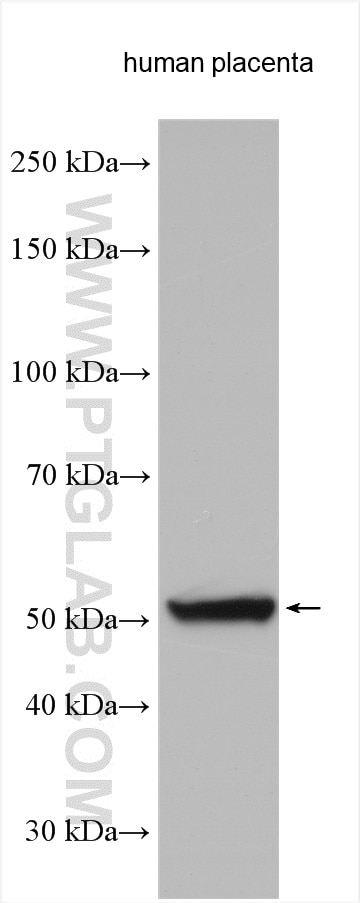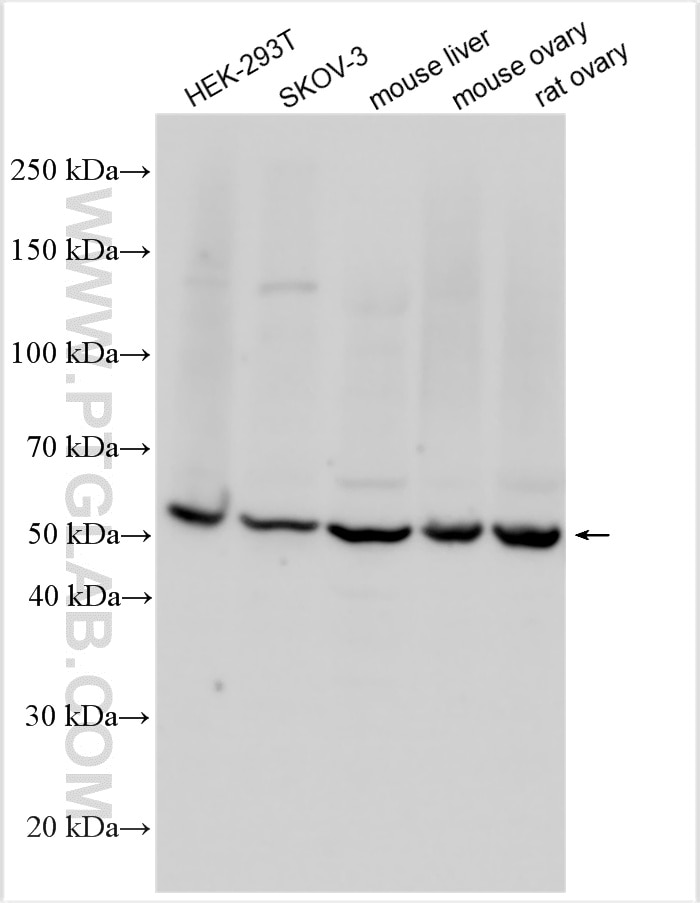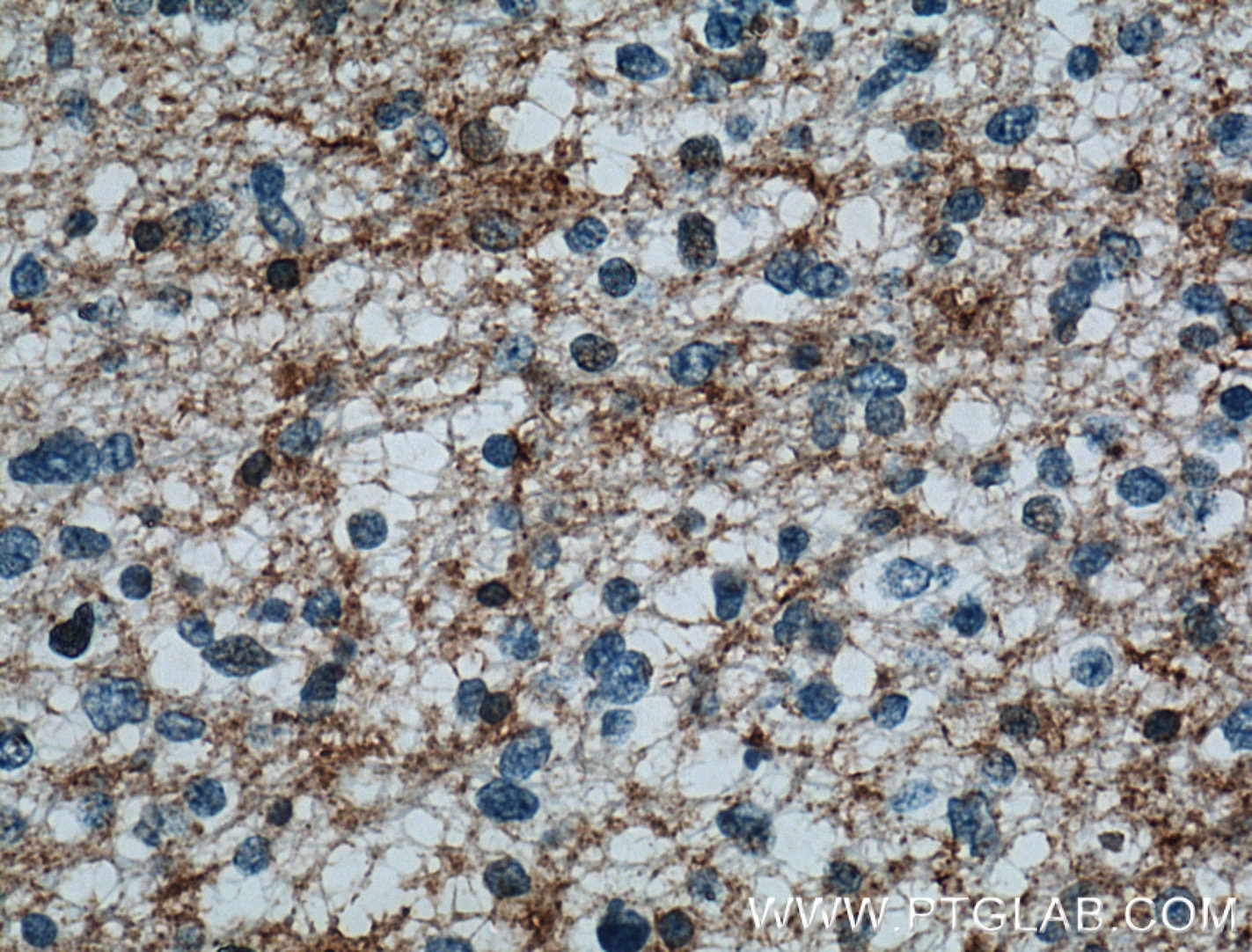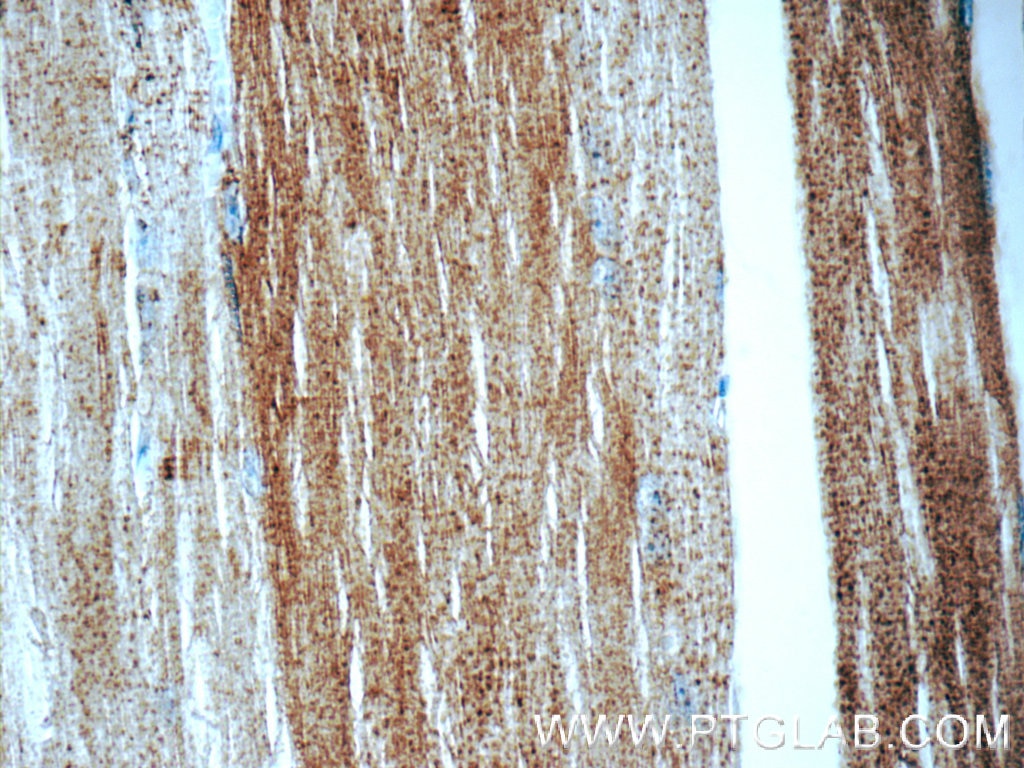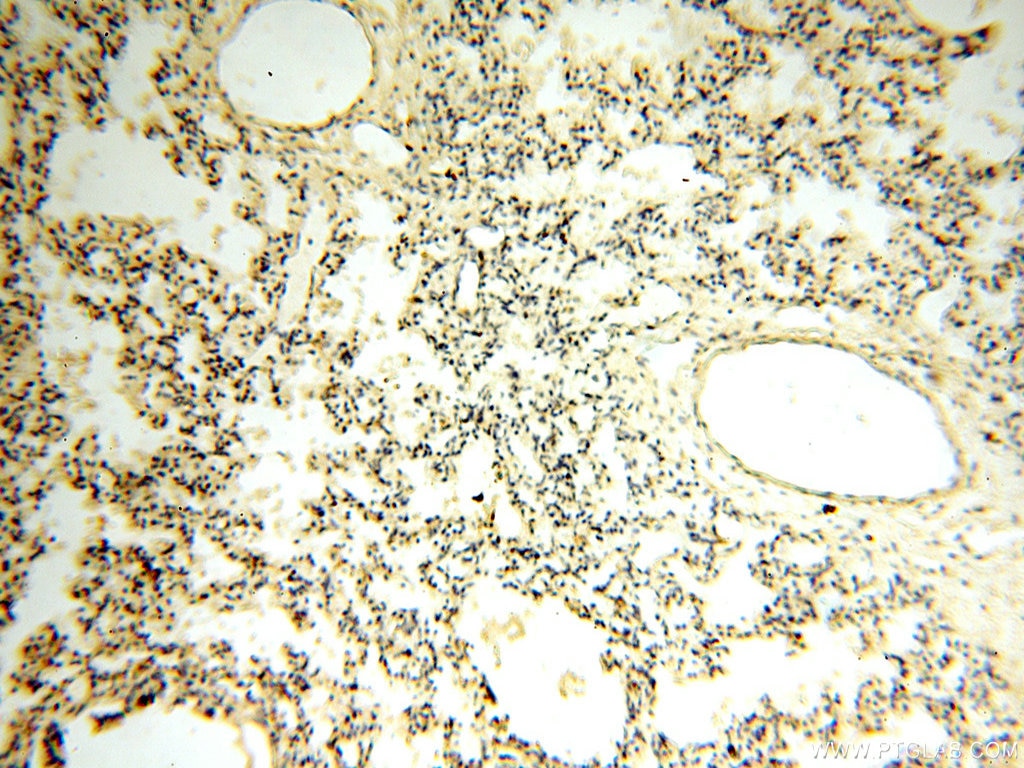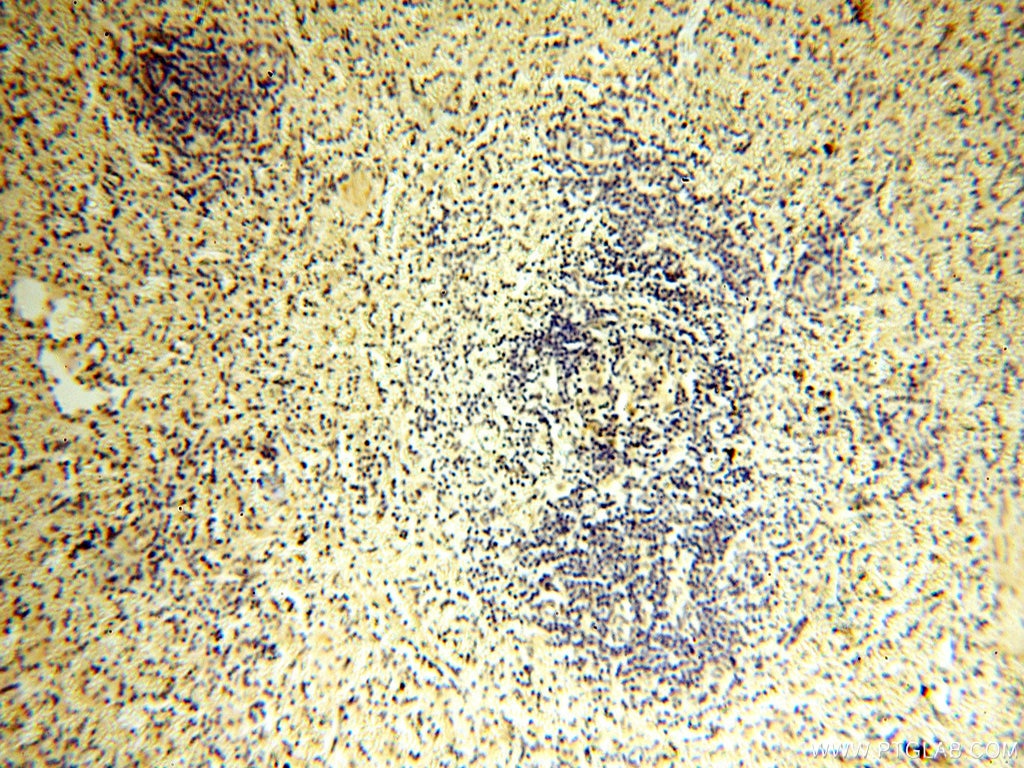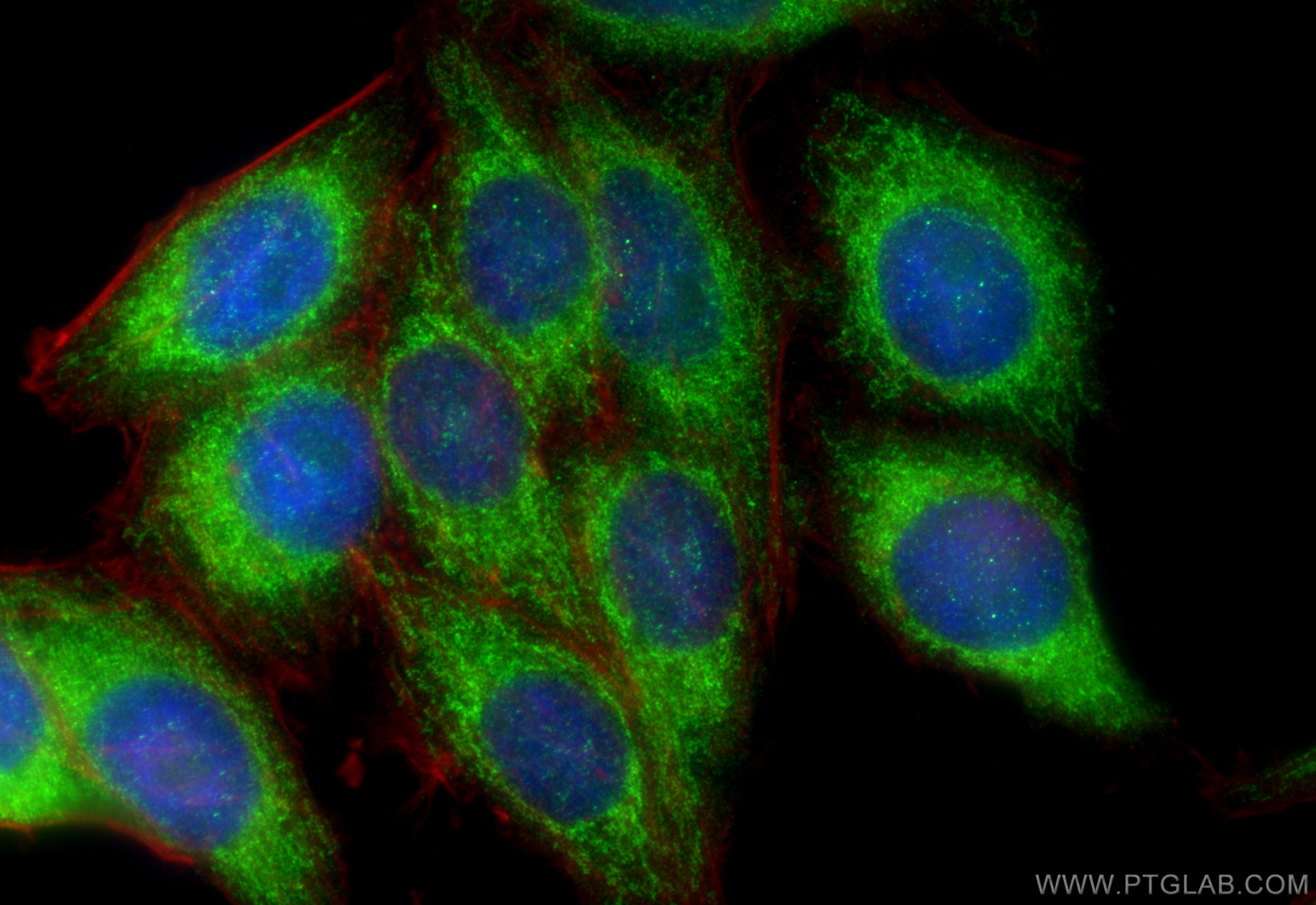Tested Applications
| Positive WB detected in | HEK-293T cells, human placenta tissue, SKOV-3 cells, mouse liver tissue, mouse ovary tissue, rat ovary tissue |
| Positive IHC detected in | human placenta tissue, rat brain tissue, human kidney tissue, human skeletal muscle tissue, human gliomas tissue, human testis tissue, human spleen tissue, human lung tissue, human ovary tissue Note: suggested antigen retrieval with TE buffer pH 9.0; (*) Alternatively, antigen retrieval may be performed with citrate buffer pH 6.0 |
| Positive IF-P detected in | human placenta tissue |
| Positive IF/ICC detected in | HepG2 cells |
Recommended dilution
| Application | Dilution |
|---|---|
| Western Blot (WB) | WB : 1:500-1:1000 |
| Immunohistochemistry (IHC) | IHC : 1:50-1:500 |
| Immunofluorescence (IF)-P | IF-P : 1:50-1:500 |
| Immunofluorescence (IF)/ICC | IF/ICC : 1:200-1:800 |
| It is recommended that this reagent should be titrated in each testing system to obtain optimal results. | |
| Sample-dependent, Check data in validation data gallery. | |
Published Applications
| KD/KO | See 1 publications below |
| WB | See 21 publications below |
| IHC | See 5 publications below |
| IF | See 2 publications below |
Product Information
16554-1-AP targets CYP19A1 in WB, IHC, IF/ICC, IF-P, ELISA applications and shows reactivity with human, mouse, rat samples.
| Tested Reactivity | human, mouse, rat |
| Cited Reactivity | human, mouse, rat, sheep, goat, geese |
| Host / Isotype | Rabbit / IgG |
| Class | Polyclonal |
| Type | Antibody |
| Immunogen |
CatNo: Ag9765 Product name: Recombinant human CYP19A1 protein Source: e coli.-derived, PGEX-4T Tag: GST Domain: 1-181 aa of BC022896 Sequence: MVLEMLNPIHYNITSIVPEAMPAATMPVLLLTGLFLLVWNYEGTSSIPGPGYCMGIGPLISHGRFLWMGIGSACNYYNRVYGEFMRVWISGEETLIISKSSSMFHIMKHNHYSSRFGSKLGLQCIGMHEKGIIFNNNPELWKTTRPFFMKALSGPGLVRMVTVCAESLKTHLLLFTPASVN Predict reactive species |
| Full Name | cytochrome P450, family 19, subfamily A, polypeptide 1 |
| Calculated Molecular Weight | 20 kDa, 25 kDa, 58 kDa |
| Observed Molecular Weight | 55-58 kDa |
| GenBank Accession Number | BC022896 |
| Gene Symbol | CYP19A1 |
| Gene ID (NCBI) | 1588 |
| RRID | AB_2088670 |
| Conjugate | Unconjugated |
| Form | Liquid |
| Purification Method | Antigen affinity purification |
| UNIPROT ID | P11511 |
| Storage Buffer | PBS with 0.02% sodium azide and 50% glycerol, pH 7.3. |
| Storage Conditions | Store at -20°C. Stable for one year after shipment. Aliquoting is unnecessary for -20oC storage. 20ul sizes contain 0.1% BSA. |
Background Information
CYP19A1(Cytochrome P450 19A1) is also named as ARO1(aromatase), CYAR, CYP19, estrogen synthase and belongs to the cytochrome P450 family. It is a terminal enzyme which transforms irreversibly androgens into estrogens and it is present in the endoplasmic reticulum of numerous tissues(PMID:16406261). The gene encodes a protein with the molecular weight between 46 kDa and 69 kDa(PMID:8129748) and the protein can be glycosylated, but the level of glycosylation does not seem to be essential for CYP19A1 activity(PMID:12606587). Brain aromatase may be neuroprotective by increasing the local estrogen levels in injured neurons so that genetic variation in the brain aromatase gene may modify the risk for AD(PMID:16767510).
Protocols
| Product Specific Protocols | |
|---|---|
| IF protocol for CYP19A1 antibody 16554-1-AP | Download protocol |
| IHC protocol for CYP19A1 antibody 16554-1-AP | Download protocol |
| WB protocol for CYP19A1 antibody 16554-1-AP | Download protocol |
| Standard Protocols | |
|---|---|
| Click here to view our Standard Protocols |
Publications
| Species | Application | Title |
|---|---|---|
Clin Transl Med Treg deficiency-mediated TH 1 response causes human premature ovarian insufficiency through apoptosis and steroidogenesis dysfunction of granulosa cells. | ||
Sci Rep Novel WT1 Missense Mutations in Han Chinese Women with Premature Ovarian Failure. | ||
Sci Rep Estrogen Secreted by Mesenchymal Stem Cells Necessarily Determines Their Feasibility of Therapeutical Application.
| ||
Fertil Steril Elevated maternal androgen is associated with dysfunctional placenta and lipid disorder in newborns of mothers with polycystic ovary syndrome. | ||
Environ Pollut Hormonal changes and folliculogenesis in female offspring of rats exposed to cadmium during gestation and lactation. | ||
Endocrinology The Immp2l Mutation Causes Ovarian Aging Through ROS-Wnt/β-Catenin-Estrogen Pathway: Preventive Effect of Melatonin. |

